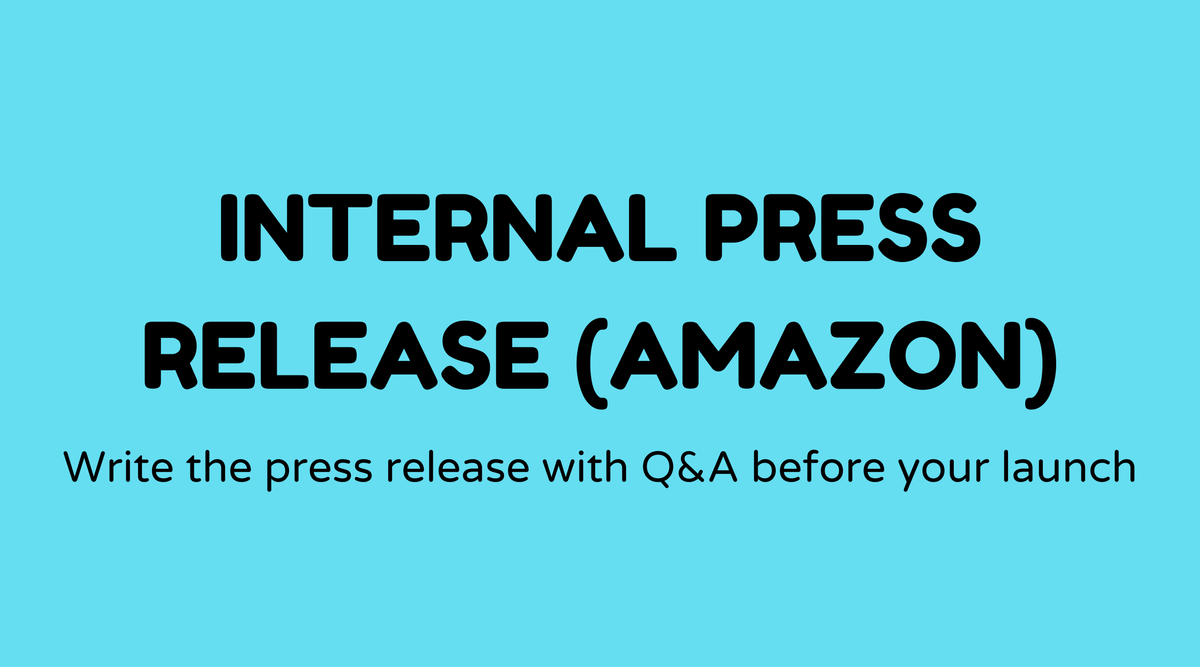Amazon-style internal press release

Overview of Amazon-style Internal Press Release:
When it comes to developing a product intended to make a difference—or simply enhance everyday life—Amazon employs an engaging strategy known as the Amazon-style internal press release. This method focuses on the essential benefits of a product from the outset, encouraging creators to prioritize what matters most to the user.
Importance of Amazon-style Internal Press Release:
You may wonder why Amazon would begin with a press release instead of diving straight into production. This technique is effective because it compels teams to prioritize customer value from the start. Rather than becoming immersed in the intricacies of product construction, it emphasizes the rationale for the product's existence and its market positioning. This approach, starting with the desired outcome in mind, provides clarity and direction that is vital in a competitive environment.
What is Amazon-style Internal Press Release:
An Amazon-style internal press release is not just an ordinary press release. It is a forward-looking document crafted as if the product has already launched and users are sharing positive feedback about it. This includes elements such as engaging headlines, strong subheadlines, and a fictional quote from a user enjoying the product. It highlights what makes the offering distinct and concentrates on the user's advantages instead of just features. By doing so, it ensures the development team targets what will enhance customer satisfaction and loyalty.
How to Create an Amazon-style Internal Press Release:
Creating an Amazon-style internal press release is not overly complicated, but it requires a shift from conventional development practices. Here’s a step-by-step guide to crafting your release:
-
Headline: Create a concise and engaging headline that clearly defines what the product is and its benefits to the user. Consider what would pique interest.
-
Subheadline: Follow this with a secondary line that reinforces your headline by providing additional details or a compelling promise.
-
Summary: Include a brief overview paragraph describing the product. Emphasize what it does and why it is necessary—essentially your "elevator pitch."
-
Problem Statement: Articulate the issue your product addresses. This should resonate with the user's challenges and clarify why your solution is especially effective.
-
Solution Statement: Discuss the product and how it effectively resolves the problem. Focus on how it benefits the user.
-
Quote from a User: Invent a plausible yet fictional quote from a prospective user. This personalizes the benefits and adds an emotional touch.
-
Conclusion: Recap the action you want the reader to take and why it’s relevant at this moment. Reinforce the benefits and the urgency of adopting this product.
-
FAQs: Anticipate potential inquiries users might have about the product. This proactive strategy addresses concerns before they surface.
Examples of Amazon-style Internal Press Release:
One well-known instance of the Amazon-style press release format is the Kindle. Before the device was even constructed, a detailed press release imagined a scenario where individuals could carry an entire library in their pocket. This document centered on the user experience and envisioned the product's success long before it became technically feasible.
FAQs:
- Does the Amazon-style press release method apply only to Amazon?
Not at all! While Amazon popularized it, any organization can adopt this strategy to keep product development customer-focused.
**- How long should an internal press release be? **
Typically, it spans one to two pages, ensuring it is informative yet concise enough to maintain engagement.
- Who should write the internal press release?
Usually, the product manager or someone in marketing with a deep understanding of user needs and product potential.
- What if the product does not yet exist?
That’s the intent! You write as if it already exists to solidify the value proposition before development begins.
- Is there a specific format to follow?
While a general format is suggested, some flexibility can be applied as long as the ultimate goal—a clear focus on user benefits—is achieved.
**- How often should this method be used? **
Apply it at the beginning of each new product development cycle to guide integrated teams toward a shared objective.



